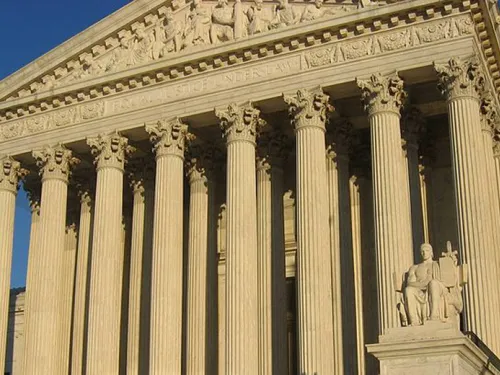King accepted award at world’s largest summit addressing antisemitism and hate. New York, NY, March 4, 2025…ADL (the Anti-Defamation League) today presented sports icon and equality champion, Billie Jean King, with the ADL’s 2025 Changemaker Award. The award was presented during ADL’s signature event, Never Is Now: The World’s Largest Summit on Antisemitism and Hate in New York City. “Billie Jean King has used her platform to break down barriers, expand…
Search Results
65 Results

Misogyny is a dangerous and underestimated component of extremism, and it shares alarming common ground with white supremacist ideology.
King will headline world’s largest summit addressing antisemitism and hate. New York, NY, February 5, 2025…ADL (the Anti-Defamation League) announced today that sports icon and equality champion, Billie Jean King, will be honored with ADL’s 2025 Changemaker Award. The award will be presented during ADL’s signature event, Never Is Now: The World’s Largest Summit on Antisemitism and Hate, held at the Javits Center in New York City on March 3-4, 2025. “The…

Part of the ADL Center on Extremism’s coverage of the misogynist manosphere and its subcultures, each of which impacts women’s experiences of safety and equity – online and offline.
Men’s Rights Activists (MRAs) are a part of the manosphere, a broad set of male supremacist, anti-feminist, misogynist and sometimes violent movements that exist largely online. MRAs embrace traditional masculinity as the ideal state of men in society and vehemently reject the…

March is Women’s History Month, which provides an opportunity to bring the experience and perspective of girls and women to the forefront of conversations in schools. These discussions should include the stories, accomplishments, milestones and viewpoints of women and how they addressed and continue to work on overcoming sexism and injustice. Because women's stories and perspectives are sometimes excluded, discounted or marginalized, we need to remember…
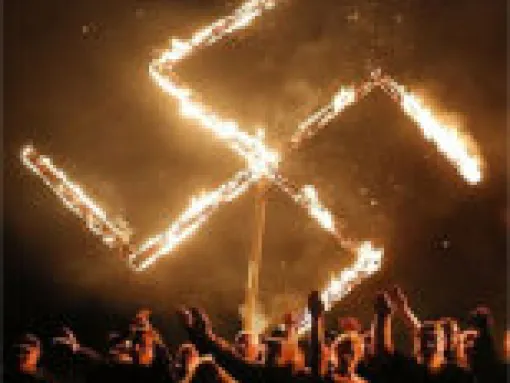
Neo-Nazis have adopted the Ku Klux Klan practice of symbolic burnings, substituting swastikas, othala and life runes, triskeles and the Celtic cross for the traditional cross burned by Klan members.

February 25, 2021 The idea of dedicating a month to Women’s History came about in 1981 when Congress requested the President proclaim a week in March as “Women’s History Week.” In 1986, the National Women’s History Project played a significant role in expanding the observance to the entire month of March. Women’s History Month recognizes and honors the historical and present-day achievements, milestones and experiences of women. Over time, other countries…
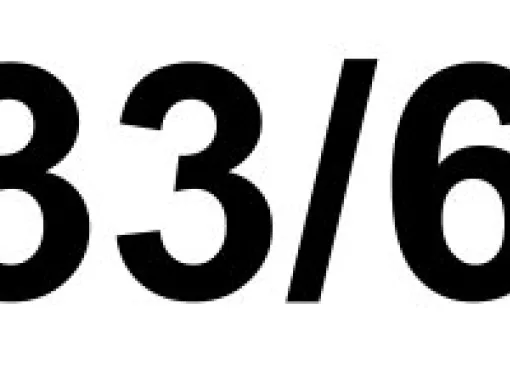
The number 33 is used by Ku Klux Klan adherents to signify the Ku Klux Klan. Since the 11th letter of the alphabet is K, three Ks signify "KKK" or the Ku Klux Klan. When using this reference, Klan members will frequently add the number 6 at the end, as in 33/6, because they think the Klan is currently in its sixth historical "era." Less commonly, some holdouts may still use the numeric code 33/5. Additional Images:

88 is a white supremacist numerical code for Heil Hitler. Read more about the meaning behind the numbers, as well as how it’s used in non-extremist forms.

AKIA is Ku Klux Klan shorthand for "A Klansman I Am." It is related to another Klan acronym, AYAK ("Are You A Klansman?"). These are among the many acronyms developed by the Second Ku Klux Klan that emerged in 1915. Although the Second Ku Klux Klan did not survive, much of its terminology and many of its rituals did, and later Klan groups freely used them. Additional Images:

AYAK is Ku Klux Klan shorthand for "Are You A Klansman?" It is related to another Klan acronym, AKIA ("A Klansman I Am"). These are among the many acronyms developed by the Second Ku Klux Klan that emerged in 1915. Although the Second Ku Klux Klan did not survive, much of its terminology and many of its rituals did, and later Klan groups have freely used them. Additional Images:

ALTERNATE NAMES: Ku Klux Klan, MIOAKGroup Status: Active (in that there are many active Ku Klux Klan groups)
For the past century, the primary symbol related to Ku Klux Klan groups (other than Klan robes themselves) is what Klan members may call the MIOAK (an acronym for "Mystic Insignia of a Klansman"). It is more commonly referred to as the "Blood Drop" Cross. It appears as a square white cross in black outline against a circular red background. In the middle of the cross is what appears…
ALTERNATE NAMES: Ku Klux Klan, MIOAK
Read more about Blood Drop Cross
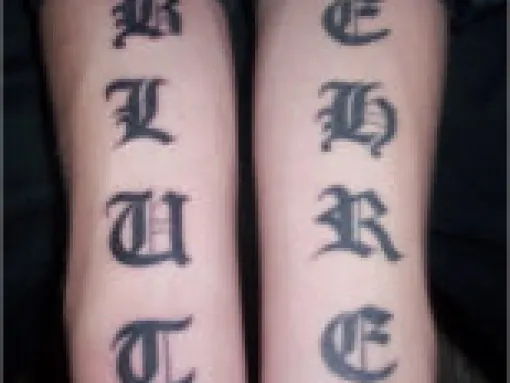
"Blut und Ehre" is a German phrase that translates into "Blood and Honor;" it was popularized by the Nazi Party (as a Hitler Youth slogan and elsewhere). Since World War II, this German phrase (and even more so for its English translation) has commonly been used by white supremacists in Europe, the United States, and elsewhere - most notably as the name of an international racist skinhead group. Additional Images:
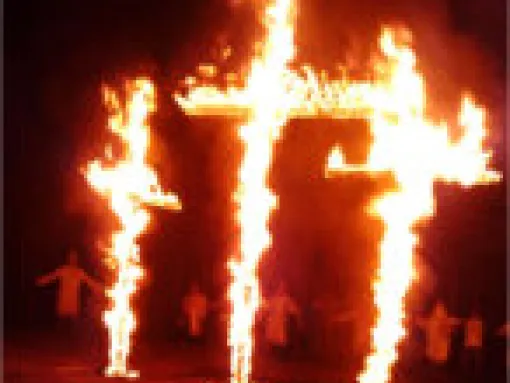
The image of the burning cross is one of the most potent hate symbols in the United States, popularized as a terror image by the Ku Klux Klan since the early 1900s. Cross-burnings (called "cross-lightings" by Ku Klux Klan groups, to make it seem as if they are not destroying a Christian cross) have long been used as a traditional symbol by Klan groups, used both in Klan rituals as well as in attempts to intimidate and terrorize victims of Klan groups. So widely associated with racial…
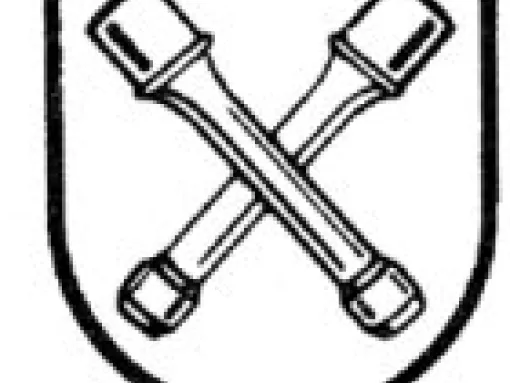
ALTERNATE NAMES: DirlewangerThe crossed grenade emblem signifies the Waffen SS unit most commonly known, after its commander, as the "Dirlewanger Brigade" (later, the 36th SS Division). Oskar Dirlewanger (1895-1945) was an SS officer involved in the Holocaust and anti-partisan actions in World War II, including the murderous suppression of the 1944 uprising of the Polish Home Army in Warsaw. Even within the Waffen SS, both Dirlewanger and his unit had a reputation for sadism,…
ALTERNATE NAMES: Dirlewanger
Read more about Crossed Grenades

ALTERNATE NAMES: For God, Race and NationFGRN is a Ku Klux Klan acronym for "For God, Race and Nation," a common Klan slogan. It is one of a number of slogans, codes and rituals created by the Second Ku Klux Klan in the early 20th century. That Klan did not survive, but many of its codes and rituals were adopted by later Klan groups. In acronym form, the slogan is used primarily as a Klan identifier, typically appended at the end of on-line messages and postings. Additional Images:
ALTERNATE NAMES: For God, Race and Nation
Read more about FGRN

It is common for white supremacists in the United States and elsewhere to use German words or phrases, or to create German-like equivalents of English words and phrases. This is most common among neo-Nazis and racist skinheads, but can be seen to some degree across all white supremacist movements. Some of the terms derive from the the Third Reich, while others are more modern in origin. Common examples include phrases such as "Weiss Macht" or "Weisser Macht" (White Power), "Weiss Junge" or …

ALTERNATE NAMES: Nazi SaluteThe Nazi or Hitler salute debuted in Nazi Germany in the 1930s as a way to pay homage to Adolf Hitler. It consists of raising an outstretched right arm with the palm down. In Nazi Germany, it was often accompanied by chanting or shouting "Heil Hitler" or "Sieg Heil." Since World War II, neo-Nazis and other white supremacists have continued to use the salute, making it the most common white supremacist hand sign in the world. Additional Images:
ALTERNATE NAMES: Nazi Salute
Read more about Hitler Salute (hand sign)
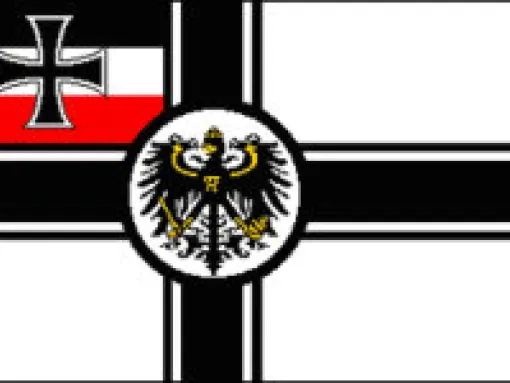
ALTERNATE NAMES: Imperial War Ensign, ReichskriegsflaggeBecause Germany has banned use of the swastika and other Nazi imagery, some German neo-Nazis use an older flag, taken from Imperial Germany, as a substitute for the Nazi flag. The imperial flag never originally had any racist or anti-Semitic meaning. Although most common in Germany, this usage of the imperial flag can also be found elsewhere in Europe and in the United States. Additional Images:
ALTERNATE NAMES: Imperial War Ensign, Reichskriegsflagge
Read more about Imperial German Flag

ITSUB is a Ku Klux Klan acronym for "In The Sacred Unfailing Being," a reference to God. It is one of many Klan acronyms created by the Second Ku Klux Klan that emerged in 1915. That Klan did not survive, but subsequent Ku Klux Klan groups continued many of its rituals and codes. Today, ITSUB has no real meaning or particular purpose and is typically used by Klan group members in on-line messages or posts solely as a way to identify themselves with the Ku Klux Klan. This has been the fate of a…

